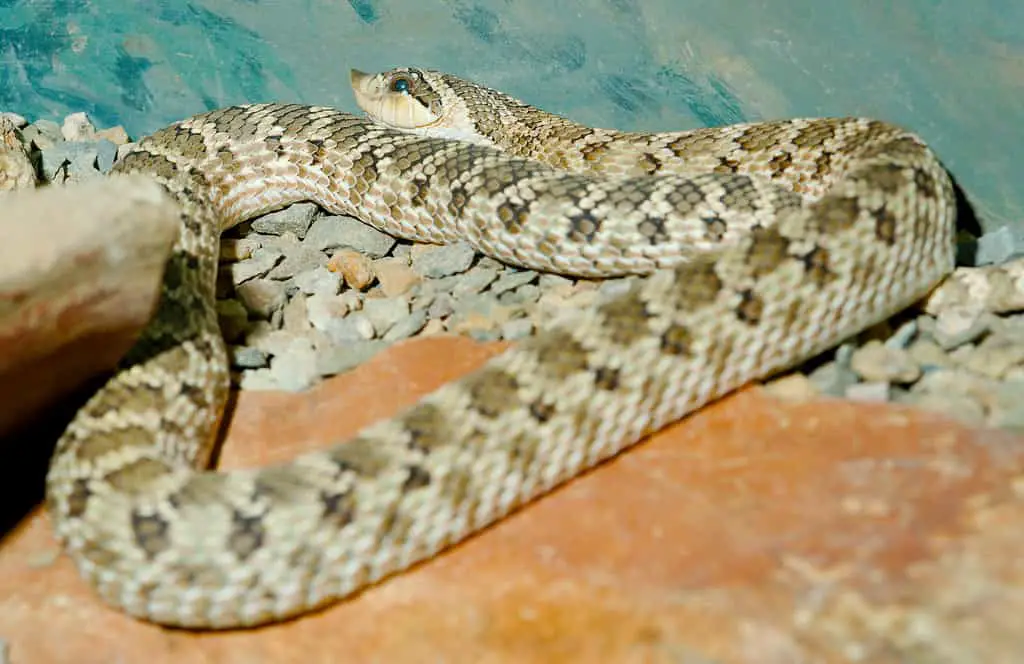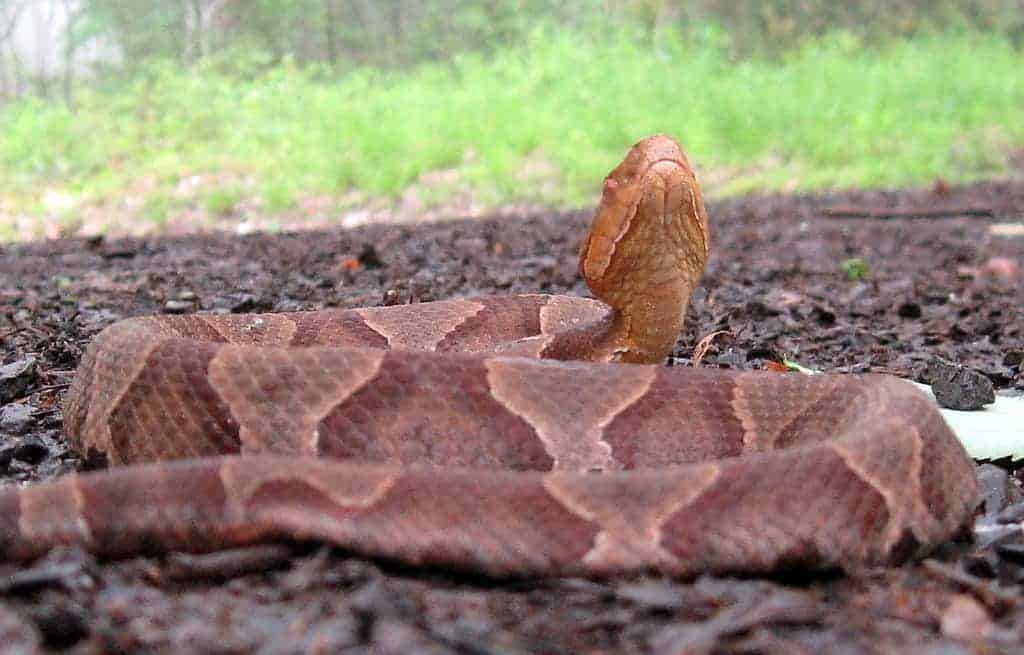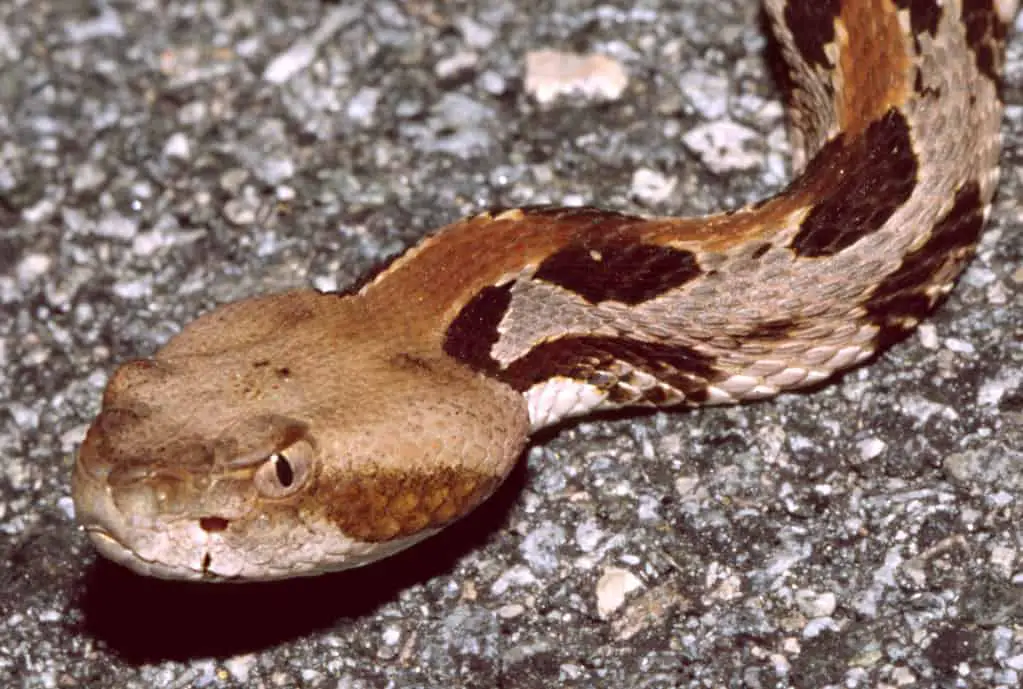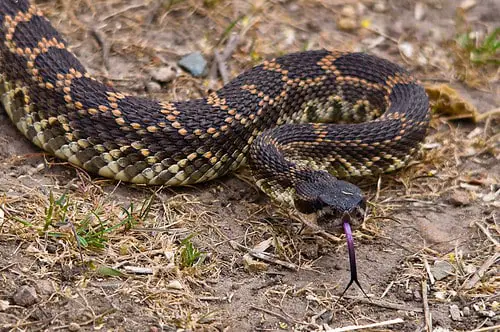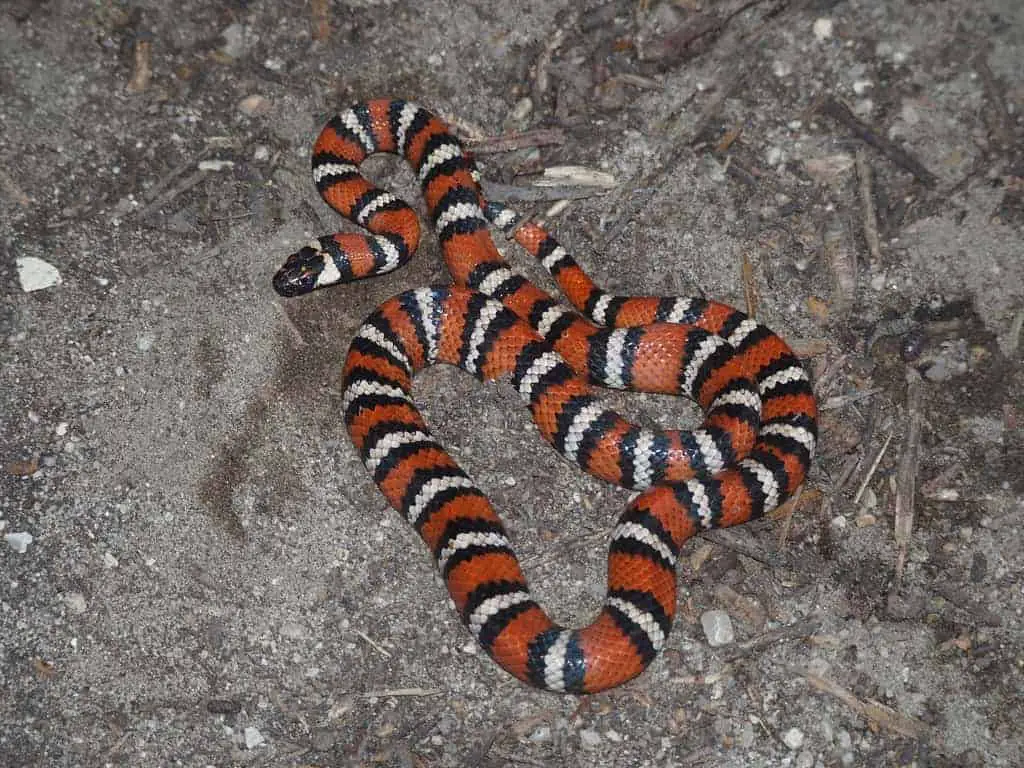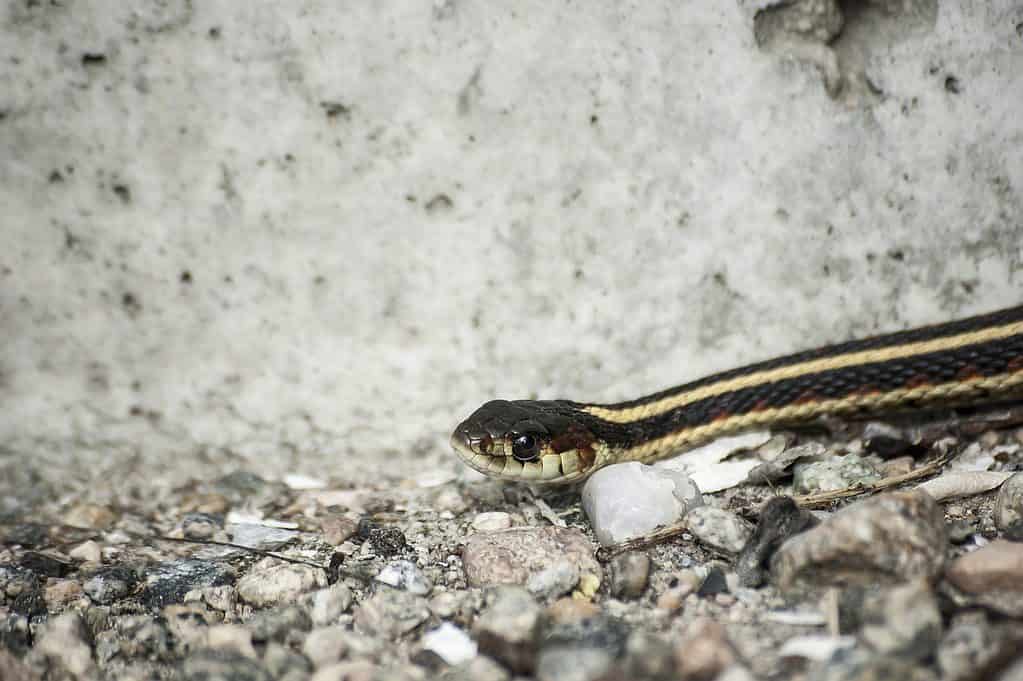While many people think of Washington State as a place for mountain climbing, skiing, and hiking, it's also home to some of the most diverse wildlife in the country. That includes snakes! We will look at different kinds of snakes in Washington state, including the western hog nose snake, northern copperhead snake, timber rattlesnake, and more!
Western Hog Nose Snake
The western hog nose snake is a small, nonvenomous snake found in southwestern Washington. It is also known as the "gopher snake" or "Hog Nose."
The western hog nose snake can be identified by its brownish-gray coloration with darker brown spots down the center of its back. The belly is white with dark spots on each side that run from the neck to the tail tip. The head will be a darker brown compared to the body coloration, and it has large nostrils that resemble those of a pig (hence the name "hog nose"). This species grows up to 2 feet, but most are 12-16 inches long when fully grown.
The diet for this species consists primarily of small rodents, such as mice or voles, as well as lizards and birds' eggs. Breeding season runs from April through June, where males compete for females during courtship rituals through song or displays until one male successfully mates with multiple females before moving on to another area where they may try again next year if successful at finding another mate."
Northern Copperhead Snake
The Northern Copperhead Snake is a venomous pit viper and one of two species of the genus Agkistrodon in Washington. These snakes are typically found in rocky outcroppings and boulder fields near streams, where they hunt frogs, salamanders, and other amphibians. They will also eat small mammals that venture too close to their territories.
The Northern Copperhead Snake begins its mating season during late summer or early fall, usually around August, when temperatures begin to cool. The males compete for access to females by displaying their colors (bright green or yellow with black markings) and raising their bodies off the ground in an arched position while emitting a rattling sound by rubbing together unique scales on either side of their tail tips called interspersed annuli (this is known as "rattlesnake behavior").
After mating, females lay eggs which hatch during early springtime months: February through April, usually depending on location within Washington state but not always, so check with your local wildlife biologist before planting anything if you are unsure what kind of climate you live in).
Mating pair displays are often very aggressive towards each other, so do not try mimicking this behavior unless you are interested in being bitten yourself! Venomous snakes like copperheads have specialized fangs at front end jaws which inject venom into prey animals when biting them; these fangs can stay erect like needles even after death, so use caution when handling dead specimens!
Timber Rattlesnake
The timber rattlesnake is a giant, heavy-bodied snake. It has a triangular head and a rattle on its tail. This venomous reptile can be found in the eastern half of Washington state, with its range extending westward into Oregon and eastward into Montana. As an endangered species, it is illegal to harass or harm timber rattlesnakes in Washington State without special permission from the Department of Fish & Wildlife.
Western Massasauga Snake
The western massasauga snake is a small, non-venomous snake that lives in wetlands (like swamps) across much of the United States. It typically measures between 36 and 48 inches long and is colored brown or dark gray with dark stripes along its back. The underside of its body is white.
You'll likely find the western massasauga near water - it likes to hunt for frogs, mice, birds, and other reptiles at night on land near shallow ponds or marshes where it can hide from larger predators by burrowing under damp leaves and soil. These snakes also have a fantastic ability: they can swim underwater for as long as half an hour!
The western massasauga has been listed as threatened in Washington State since 1987 due to habitat loss caused by development projects like agriculture; road construction; logging operations; oil exploration; residential development (including subdivisions); grazing activities such as cattle ranching/farming.
Western Rattlesnake
If you're lucky enough to see a rattlesnake, you'll know it. The western rattlesnake is known for rising and flicking its tail - not unlike a dog wagging its tail - before striking. It also has an eye-catching pattern of light brown blotches on its back and sides, with dark brown or black rings around the blotches.
The snake's habitat includes mixed woodlands, grasslands, and open areas near streams or ponds where they can find rodent prey such as mice, voles, and rats. They like to hide under rocks or debris in rocky hillsides but are also found in urban areas such as Seattle parks if the suitable shelter is available (like underneath picnic tables).
If you see one: Do not try to handle it! Give the snake room by slowly backing away from it; try not to make any quick movements since these could be interpreted as signs that you want to fight for dominance over territory or food sources. You can avoid getting bitten by keeping your hands away from their mouths when handling wild animals; snakes do not always use venom when biting people but may bite defensively if they feel threatened or attacked by someone accidentally stepping on them (or trying to step on them).
California Mountain Kingsnake
The California Mountain Kingsnake is a nonvenomous snake native to California's Central Coast and Sierra Nevada regions. It is also known as the Common Kingsnake and Western Gray-banded Snake, but these are all subspecies of the same snake.
The California mountain kingsnake can grow up to six feet long and weigh up to 6 pounds, making it one of the most giant snakes in North America. These snakes are found at elevations between sea level and 8,000 feet above sea level, though they prefer elevations above 3,000 feet.
Common Garter Snake
The Common Garter Snake is native to Washington and can be found in various habitats, including forests and urban areas. They are often seen in gardens and fields eating slugs, earthworms, and other small animals. They grow up to 2 feet long but can stretch their body out another foot in length when threatened or angry!
Black Bull Snake
The black bullsnake (Pituophis melanoleucus sayi), also known as the western bullsnake, is a medium-sized nonvenomous colubrid native to western North America. The snake gets its name from its resemblance to the eastern bullsnake and its tendency to rear up when threatened.
The black bull snake is roughly oval with smooth scales and a coloration that varies widely depending on its surroundings. Its belly can be white, yellowish, or pinkish; it may have black or dark brown blotches on the back, which fade into more pale coloring at the midsection; sometimes, the underside is entirely white or pink. There are even some specimens with a distinctive orange stripe down their backs!
The black bull snake lives in semiarid grasslands from southern Alberta eastward through Montana and Wyoming; in dry, rocky areas throughout most of Colorado, into Arizona (except for some arid regions) as well as New Mexico; Nevada eastward into Utah up until about 10 miles west of Salt Lake City where it disappears into piñon-juniper woodlands.
Many different kinds of snakes live in Washington!
You may think snakes are scary, but they're an essential part of the natural ecosystem. Snakes help control the populations of mice, rats, and other small mammals. They don't eat birds or plants, so you can breathe easily, knowing that your backyard bird feeders are safe from harm.
If you live in Washington state, there is a good chance that you'll see one or more kinds of snakes during your lifetime. If a snake ever gets too close for comfort (rare), remember that it's probably just curious about what you're doing there!
Conclusion
I hope you have enjoyed learning about the different kinds of snakes in Washington state. It is an exciting state with many unique animals, and these are just some of them!
If you ever see a snake in Washington, please don't try to pick it up or kill it! Snakes are essential members of our ecosystem and can help keep rodent populations down. So leave them alone and let them go about their business.

